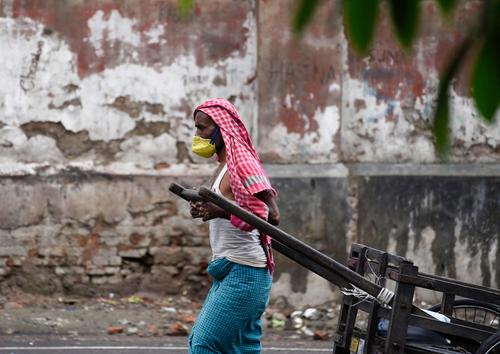
As India recorded 122 million job losses in April 2020 and then saw 91 million of these recover by June, a question that begged an answer was the impact of the lockdown on household incomes. While the compilation of household incomes during the lockdown will begin getting ready only from September this year, it is possible to get a preview of household incomes by studying the responses of households to a much simpler question – on whether their incomes improved or deteriorated during the lockdown.
Answers to this simple question reveal that during the lockdown months, April through June this year, the proportion of households reporting an improvement in incomes compared to a year ago declined quite sharply. The proportion that said that their incomes were higher than a year ago was 9.6 percent in April. This fell to 6.1 percent in May and then to 4.4 percent in June. The recovery in jobs is not reflected in perceptions regarding improvement in incomes at all.
The hit on incomes during the lockdown is felt across the household income spectrum. The worst-hit are the middle classes and the upper-middle classes. Before we dwell into the income distribution of this hit we first absorb a simple relationship between income levels and income growth as is revealed by the data prior to the lockdown.
As the income of a household rises, the probability of its income continuing to rise also rises. We infer this from the proportion of households that say that their incomes are better compared to a year ago across the income spectrum. Before the lockdown, less than 20 percent of households that earned less than Rs.100,000 a year said that their incomes are higher than a year ago. This proportion keeps rising systematically as income rises. When annual incomes reach Rs.400,000, 40 percent say that their incomes are higher than a year ago. And, once the annual income crosses Rs.600,000 more than half the households said that their incomes are higher than a year ago.
This strong positive relation between the probability of an increase in income and the income level itself suggests growing income inequalities. But, that would be a separate discussion.
Here we concentrate on the distribution of the fall in the proportion of households stating that their incomes are better than a year ago. We compare the plot of household income levels against proportion of households that report an improvement in incomes. We compare such a plot during the lockdown months of April-June 2020 with a similar plot a year ago, of April-June 2019.
None of the respondents who earned less than Rs.4,000 a month said that their incomes had improved during April, May and June. Less than five percent of those who earned between four and six thousand a month said that there was an improvement. But, this worsened in June when none of the respondents who earned less than Rs.6,000 a month said that their incomes had improved over the past 12 months. The great improvement in employment in June did not help improve incomes at the lower end of the income spectrum.
Not many were seeing an improvement in their incomes earlier. In April-June 2019, only around 14 percent of the households that earned less than Rs.6,000 per month reported an increase in income over a year. How much worse could they get? The average fell to around 1 percent in April-June 2020, implying a fall of 13 percentage points.
Middle income households, particularly at the higher income levels, have suffered much more, because they had a lot more to lose. Their loss is in excess of 30 percentage points.
In April-June 2019, more than 50 percent of the households that earned more than Rs.500,000 per annum reported a year-on-year increase in household income. In April-June 2020, less than 15 percent of such households reported a similar increase. As incomes rise above Rs.1 million per annum, the proportion of households reporting an increase in income drops dramatically. It drops to single digits beyond Rs.1.5 million per annum and then to zero for incomes between Rs.1.8 million and Rs.2 million a year. In the year-ago period more than 60 percent of households that earned more than Rs.1 million reported an increase in income.
There is an apparently anomalous behaviour of the data at the far end of the income spectrum. One third of the households that earned between Rs.2.4 million and Rs.3.6 million and half of the households that earned more than Rs.3.6 million per annum reported an increase in income during April-June 2020. We call this apparently anomalous because the sample turns thin at the higher end of the income spectrum. Nevertheless, it is interesting to note that a year ago, over 70 percent of such households had reported an increase in incomes compared to a year ago.
On an average, i.e. across all income groups, 33 percent of the households had reported an increase in income in the April-June 2019 quarter. In the same quarter of 2020, only 6.7 percent of households reported an increase. Every income group has suffered a big hit in terms of the proportion of households who report an increase in income. But, a greater proportion of relatively richer households have been hit by their incomes not growing.










very nice and precise article sir.like it. sir may i know how much job loss in in may and job recovry in july and august figuarwise .